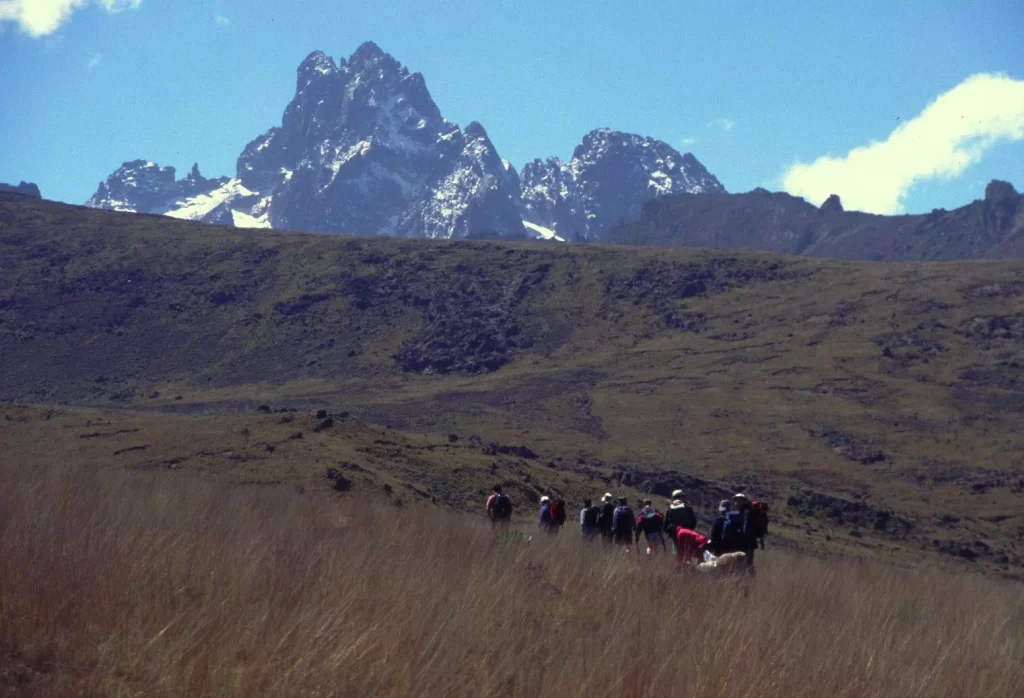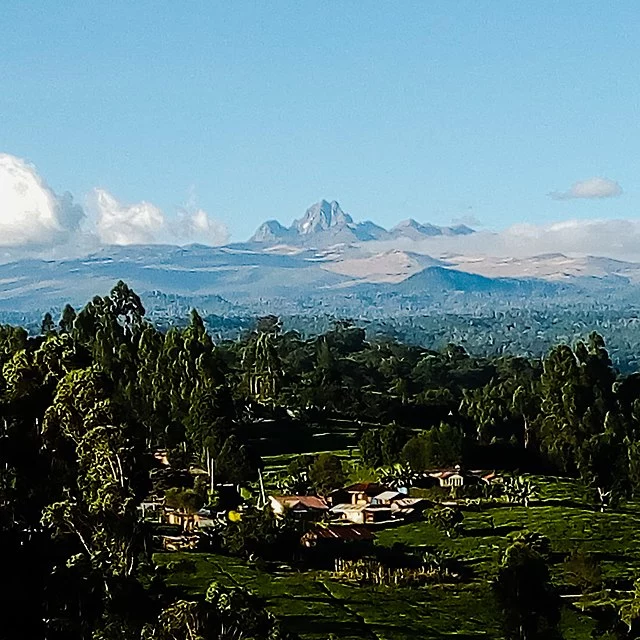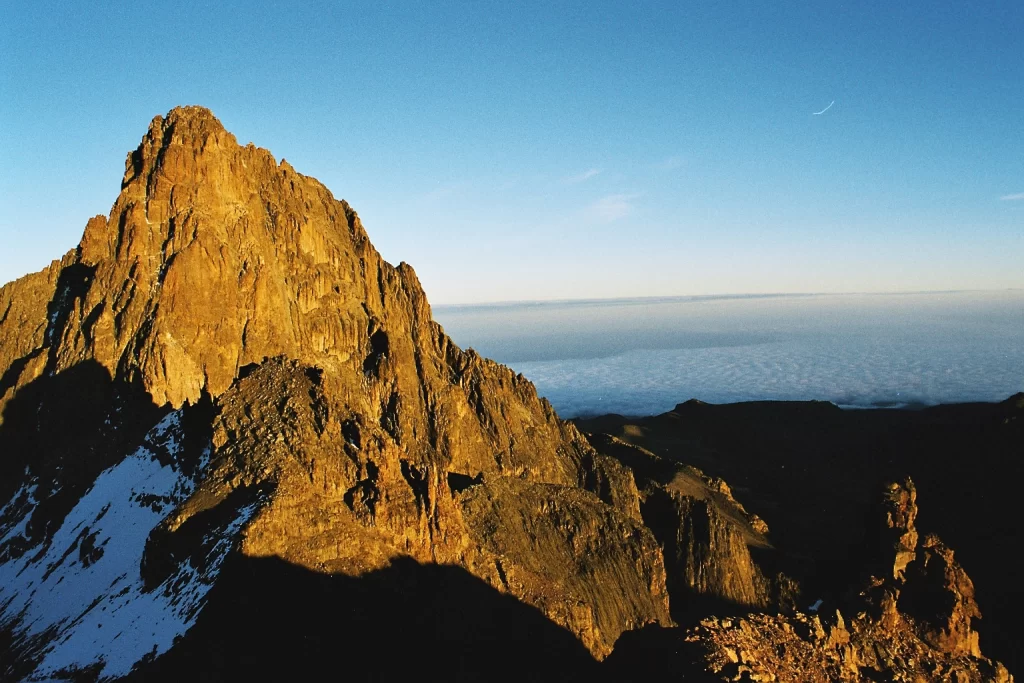Mountains are formed when the earth’s crust (plates) collide and pile up until tall structures are formed. A process known as plate tectonics. Volcanic, fold, plateau, fault-block and dome are the categories in which all mountains in the world are grouped in.
Mount Kenya (or Mount Kirinyaga in local dialect), which is located in Central Kenya and lies on the south of the Equator, is the second highest peak in Africa at 5,199 meters. Mount Kenya has three peaks: Batian, Nelion and Point Lenana; and since it is an ancient extinct volcano, whose last period of activity was between 2.6 to 3.2 million years ago, it has a snow capped peak.
Founded in 1949, Mount Kenya National Park went on to become an International Biosphere Reserve in 1978. In 1997, the United Nations Educational, Scientific and Cultural Organization (UNESCO) added the Mount Kenya area to its World Heritage List. The new millennium (or the year 2000) saw the area become a Nation Reserve and be managed by the Kenya Wildlife Service.
How Long Does It Take To Climb Mount Kenya?
Described as “one of the most impressive landscapes in Eastern Africa with its rugged glacier-clad summits, Afro-alpine moorlands and diverse forests that illustrate outstanding ecological processes” by UNESCO, scaling Mount Kenya is certainly an adventure of a lifetime.
Deciding which peak you want to scale is important because it will determine the duration of your climb. Mount Kenya has twin summit peaks of Batian and Nelion at 5199 meters and 5188 meters respectively.
Point Lenana is the third highest peak at 4985 meters. It is equally important to note that because of its closeness to the equator, dusk sets in immediately after the sun sets. This can catch many hikers who could be far from base camps unawares.
The trail you use to ascend to the summit is another key determinant in the amount of time it will take to reach the summit. On average it takes about three to seven days to ascend and descend from the mountain depending on the trail taken. Mount Kenya can be hiked at any time of the year.
Mount Kenya Hike

There are four trails to choose from, each with its pros and cons. The Naro Moru trail is the shortest, most direct and most popular route but at the same time quite steep. It is normally used for descent (expect to spend 3-4 days hiking on this trail). The Burugut trail is rarely used as it is poorly marked and one needs an expert guide to navigate the dense forest cover (expect to spend 3-7 days hiking on this trail).
Sirimon trail is preferred for its ease of climb as compared to Naro Moru (expect to spend 4-6 days hiking on this trail). Chogoria is the longest yet most preferred as it offers the best view of Mount Kenya’s landscape and wildlife variety (expect to spend 4-6 days hiking on this trail).
Regardless of which route you use there are huts in abundance throughout the trails which offer food and accommodation complete with hot showers for the hikers.
Do You Need Oxygen For Mount Kenya?
Altitude sickness or mountain sickness occurs when one travels to a high attitude too quickly. At an altitude of 17,057 feet above sea level, the oxygen at Mount Kenya is scarce. Breathing becomes difficult as one is unable to take in as much oxygen as the body requires. There are three types of mountain illnesses but Acute Mountain Sickness is the most prevalent. Fatigue, vomiting, headache, dizziness and increased heart rate are its general symptoms.
Before scaling Mount Kenya, one is encouraged to maintain a high calorie diet and be exercising regularly at least three months prior to the hike. On the day of the hike, one should carefully plan their route to the summit, this can be done with the assistance of a guide. One should also stock up on medications and supplements plus double-check that they have packed the appropriate hiking gear.
During the hike one should constantly drink lots of fluids, water to be more specific, and take their time by walking slowly during the hike. Including acclimatizing days or rest days will also do one a lot of good as it allows their body to adjust to the level of oxygens at that particular altitude. If altitude sickness symptoms persist, start the descent down immediately and inform the relevant authorities.
Is Mount Kenya Visible From Nairobi?
During the Coronavirus disease (Covid 19) pandemic, when all the regulations were being enforced and the city was experiencing relatively low levels of air pollution, the skies became cleaner and clearer. Mount Kenya could be spotted and was being photographed from different locations around the base using different cameras and lenses and even with the naked eye.
Mount Kenya is not visible from Nairobi under any conditions since it is too far away.

Short-term visibility – one’s ability to see blue skies – wasn’t a phenomena being witnessed in Kenya alone. All around the world, countries reported an easier sighting of a cleaner and clearer skies thanks to the corona lockdown period. Particulate matter are small airborne particles that are generated by pollution and scatter sunlight thereby reducing visibility. Basically, less pollution leads to a clearer vision.
Is Mount Kenya In The Death Zone?
Death zone is a term used by mountain climbers to refer to high altitude areas with insufficient oxygen for humans to breathe. A mountain has to typically be above 8,000 meters (26,247 feet) for it to be classified as a death zone. Only fourteen mountains in the world have their peak in the death zone. Pemba Gyalje and Lincoln Hall are so far the publicly known and recorded cases of people who have reached the death zone and left alive and breathing.
Mount Kenya’s peaks are at 5,199 meters or 17,057 feet (Batian), 5,188 meters or 17,021 feet (Nellion) and 4,985 meters or 16,355 feet (Point Lenana) respectively. This does not mean there have never been fatalities reported at the mountain, it simply means the fatalities were not death zone related. Mount Kenya is not a death zone.

